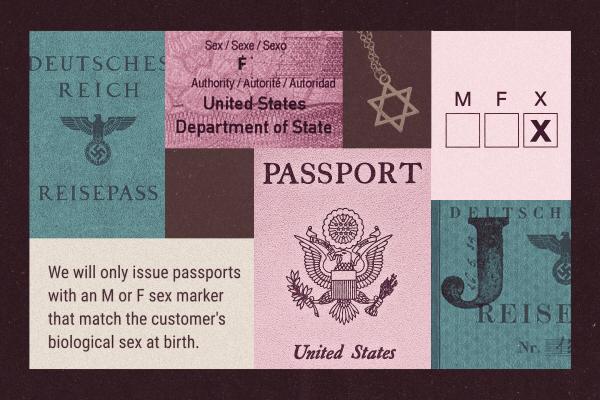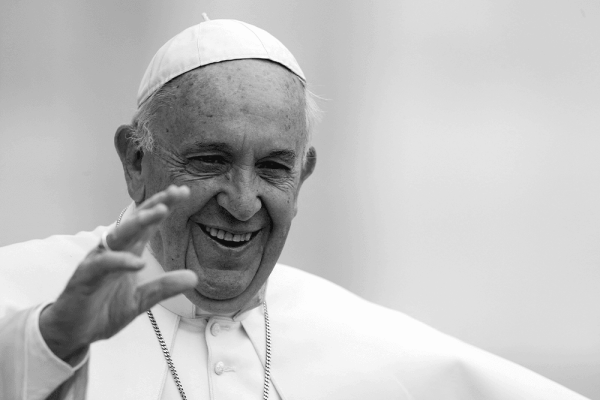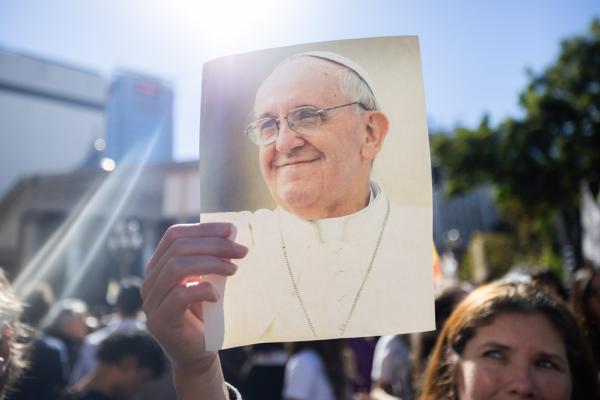The church was festooned with a green wreath above the altar cross and rows of red and white poinsettias. But the lights were dim and the candles were ready, along with small packets of tissues placed strategically in each pew.
The Blue Christmas service at First Baptist Church of the City of Washington, D.C., was just what Charles Pugh, who worshipped alongside a couple of dozen others, needed that cold night in the nation’s capital.
Pugh, a Washington musician who visited the church for the special service, is estranged from his family.
“I miss my family very much and my father passed away a month and a half ago and I was unable to see him,” he said before the liturgy began.
The service was one of several events in the Washington area and many more across the country that have marked one of the longest nights of the year. They are acknowledgments that — despite the mall music and tinseled trees — the season can also be the darkest time of year for those who are grieving, no matter the source of their grief.
Pugh was the first to arrive for the Dec. 13 service. It featured gentle piano music, the opportunity to light a candle to commemorate his loss, and the offer of a private prayer with a member of the clergy.
“For many people who are feeling some kind of loss, Christmas can be the hardest season of all,” said the Rev. Julie Pennington-Russell, the church’s senior pastor, as she welcomed the attendees to the intimate gathering.
“You may not have felt very free to cry in front of other people in this season but this is one time and place where you may feel free to express yourself in any way that feels good to you.”
The people gathered, young and old, some sniffling, some stoic, and responded to a liturgy with the words, “Why am I so troubled? I will put my hope in God.” They sang “What Child is This?” and listened to a bass soloist’s rendition of “Sweet Little Jesus Boy.”
And they heard a testimony from the Rev. Paul Clark, a church consultant who recalled the death of his mother during the 1984 Christmas season and described the fresher grief of coping with his own recent diagnosis of amyotrophic lateral sclerosis, or ALS.
“We’re all born to live, to love and to die,” he said. “Between the birth and the dying the question is what do we make of it?”
The service was held for the second year in a row at the church just blocks up 16th Street from the White House. Across North America, the tradition seems to have grown in the last couple of decades.
Some familiar with these services trace the ceremonies to memorial services held by hospices and hospitals to gather survivors who might have a particularly difficult time celebrating Christmas without someone they loved. The Rev. Taylor Burton-Edwards, director of worship resources for the United Methodist Church, said some churches started offering the services for their communities in the 1980s and ‘90s.
But other congregations, such as the Episcopal Church of the Ascension in Dallas, have just begun the tradition this year.
“We wanted to provide a safe, quiet space for people to grieve, remember, and reflect without apologizing for their sadness,” said the Rev. Marci Pounders, associate rector of the church whose members had not only dealt with the death of relatives but divorce, infertility, and job loss.
“People in grief often do not have the strength to ‘get over it,’ and ‘get in the Christmas Spirit.'”
At her church’s service, attendees ranged from a man who lost his mother-in-law and his job in the same month to a woman who had to put down her cat, her sole companion.
Some churches seek tangible ways for people to remember their loved ones. At the Dallas church, there was a “Table of Remembrance” in front of the altar rail where people could bring mementos of those they lost. Reid Temple Restoration Center, a Maryland counseling facility started by an African Methodist Episcopal congregation, featured a “Wall of Remembrance” where attendees could place photos of relatives during its recent “Celebration of Life, Love and Remembrance.”
D. Fredrica Brooks-Davis, executive director of the center, said the celebration featured gospel musicians, with a singer performing Kirk Franklin’s “My Life is in Your Hands” and liturgical dancers ending the program with “This is My Wish,” a song by The Walls Group that expresses the hope “that peace will find its way to every boy and girl.”
Participants were able to stand and name the person or persons they were remembering, whether they died recently or long ago.
“When people are standing and they see others standing with them and they turn their candles on, it brings about a sense of unity,” Brooks-Davis said of the event in which participants are provided battery-operated candles.
In an article on “Christmas Blues” in his World Encyclopedia of Christmas, author Gerry Bowler said reasons for the seasonal sadness — depicted in songs such as Elvis’ that begins “I’ll have a blue Christmas without you” — range from loss of a loved one to “resentment of the commercialism” of the season.
“My own little evangelical church here in Winnipeg has held such services for years — not at the regular worship time but on an evening during the Christmas season [and not necessarily on December 21, the longest night of the year, which some churches do],” he told RNS, in an email, of his Canadian congregation.
While Protestants tend to offer these events more often, Catholics have them too, including a Mass five years ago that reportedly attracted 300 people to a Louisville, Ky., church after the priest wrote a column in the archdiocesan paper about holiday grief that sparked a strong response.
The Rev. Andrew Menke, executive director of the U.S. Catholic bishops’ Secretariat of Divine Worship, said there’s no official Catholic liturgy for such a service, but some parishes have them.
“It would be up to a pastor to decide that there’s a need for something of this nature, and to decide on the best way to try to meet that need,” he said.
Beyond once-a-year-events close to Christmas, some churches start closer to Thanksgiving to offer support for members and visitors who are dreading the holidays.
Sam Hodges, executive producer of Church Initiative, said more than 8,000 churches have used “Surviving the Holidays” video resources offered by his ministry’s nonprofit GriefShare since 2008, with the number increasing by more than 80 percent since 2012.
Groups gather to watch the video and hear from evangelical leaders about how to cope with seasonal expectations, such as making tentative commitments to attend gatherings in case it turns out they’re not up to doing so at the last minute.
“That can make it easier for them to make a decision just not to go,” he said.
No matter what grief-related events people may attend before Christmas, clergy such as Pennington-Russell still make sure to let them know they’re also welcome at the Christmas Eve service where they’ll likely hear “Joy to the World.”
Pugh, who attended the Blue Christmas service at First Baptist and is Lutheran, said he wouldn’t rule out attending a more festive Christmas service too.
“I would because it reminds me of those happier times,” he said. “And I’m not one to be disgruntled and sad all the time.”
Got something to say about what you're reading? We value your feedback!







